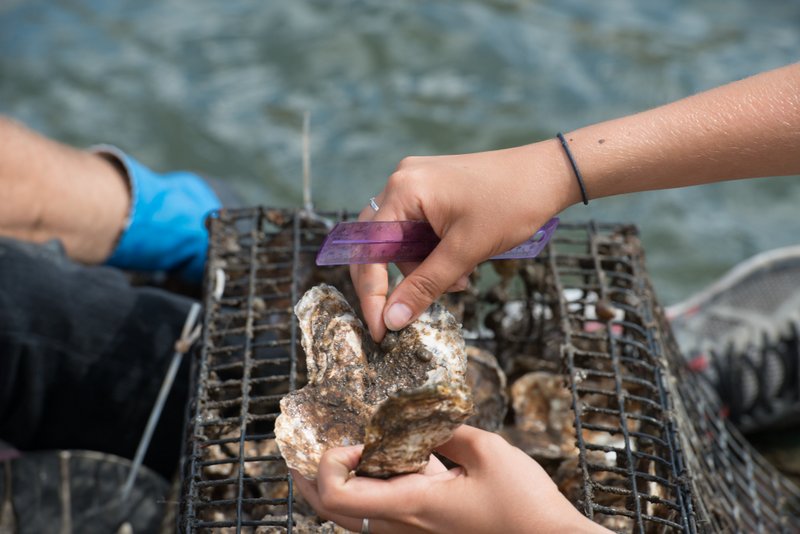3. There are 12 Oyster Traps Under the Water Along Hudson River Park

The Lower Hudson River estuary once had 350 square miles of oyster beds, with some biologists estimating that New York Harbor contained half of the world’s oysters. Oysters were a constant narrative for the early explorers, appearing in countless diaries of those who came to the New World. Oysters were introduced to these explorers by the Lenape Indians and the old oysters were big, often more than a foot long according to contemporary eyewitness accounts. Pollution over centuries made the oysters inedible, and they were officially declared to be too polluted to eat in 1927. The oyster beds along the future Hudson River Park waterfront were completely wiped out.
Hudson River Park has been restoring New York’s oyster population, not for consumption, but to assist in the filtering of water, as reef habitat, and to stabilize the shorelines. At Pier 32, 12 oyster wraps are around the old pier pilings and there are 15 oyster research stations run the Billion Oyster Project. In 2017 alone, 2400 oysters and spat on shell clusters were restored to the Hudson River. The Park estimates that 30,000 gallons of water are filtered by the oysters every six hours at Pier 32.
In 2018, the Hudson River Park Environment & Education Department found new clusters of wild oysters in Hudson River Park, a feat considering the complete eradication of the oysters and a testament to the cleaning efforts. One of the oysters was over 7 inches long, the largest documented wild oyster to be found in the estuary in over half a century.





